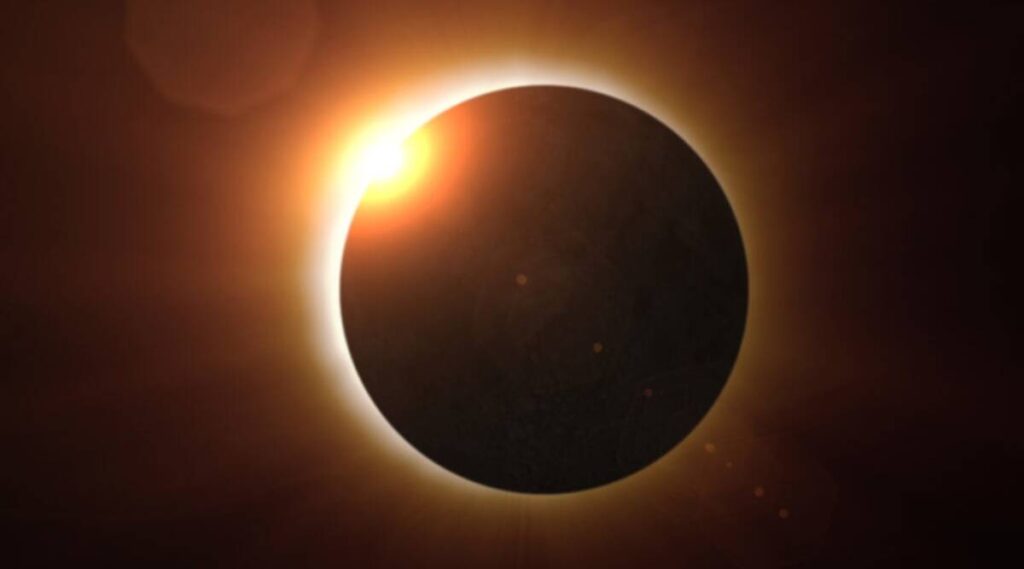
The first solar eclipse of the year will occur on Thursday, June 10. Except for a few minutes before sunset in Ladakh and Arunachal Pradesh, it will not be visible in India.
The astronomical phenomenon of annular solar eclipse occurs when the Sun, Moon, and Earth align in a straight line and nearly on the same plane. However, due to its elliptical orbit, the Moon does not completely cover the Sun, leaving the Sun’s visible outer edges to form a “ring of fire.”
The eclipse will be visible in its entirety from a large portion of North America, Europe, and Asia.
The path of the eclipse will only be visible in the north-eastern extremes of the country, in Arunachal Pradesh and Ladakh, according to Debiprasad Duari, Director of M P Birla Planetarium.
People in Arunachal Pradesh, according to Duari, will see the eclipse shortly before sunset.
The Moon will cover a minuscule fraction of the Sun and will be very low in the horizon, lasting at most 3-4 minutes depending on the position, according to Duari.
The eclipse will be visible in Ladakh for a short time but at a higher altitude.
“On the northern borders, in Ladakh, a sliver of land in the border region can experience the last phase of the partial eclipse, again for a short duration, but relatively at a higher altitude than the eastern part of the country,” he said.
According to the official, a very small portion of the solar eclipse was visible from the vicinity of Dibang Wildlife Sanctuary in Arunachal Pradesh at around 5:52pm. The last phases of the phenomenon can be seen at around 6pm in northern Ladakh, where the sun will set at around 6.15pm.
First, the partial eclipse will begin around 11:42 a.m. Indian Standard Time, and the annular eclipse will appear to begin around 3:30 p.m. and will last until 4:52 p.m., though at different intervals for different regions depending on one’s geographical location.
According to him, the partial eclipse will end around 6:41 p.m. IST.
Various organisations around the world are organising live coverage of the eclipse.
Various organisations around the world are organising live coverage of the eclipse.
The upcoming solar eclipse, dubbed the ‘ring eclipse,’ is gaining a lot of attention as people prepare to see the Sun appear in a very bright ring surrounding the dark disc of the Moon.
A total solar eclipse also necessitates that the Moon and Sun be in direct line with the Earth. However, it can only be seen from a small area because those who witness the total eclipse are in the centre of the Moon’s shadow when it hits Earth.
The distance of the Moon from the Earth distinguishes an annular eclipse from a total eclipse. It happens when the Moon is the furthest away from Earth, making it appear smaller than usual and not blocking the entire view of the Sun.





